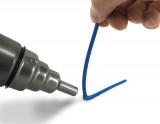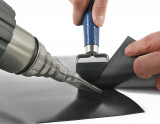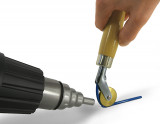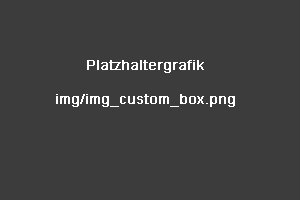Welding plastic with a hot air tool
Preparation
Remove dirt and polish residue from the repair area.
Drill the ends of a crack in order to reduce material stresses. To get a strong bond by welding the largest possible surface, you have to mill a V-shaped gap along the crack.
Select the appropriate temperature for the material.
Notice always, that the surface is molten enough. Press the welding rod into this melt. The welding rod must be molten, too.
Welding with the welding shoe
 Push the welding rod through the welding feed tube. Melt the end up with the hot air. You can now heat the joining area until you recognize that the surface melts. Press the soft end of the welding rod onto the plastic part and start to pull the hot air gun slowly to your body. Press the welding rod with constant pressure through the feed tube.
Push the welding rod through the welding feed tube. Melt the end up with the hot air. You can now heat the joining area until you recognize that the surface melts. Press the soft end of the welding rod onto the plastic part and start to pull the hot air gun slowly to your body. Press the welding rod with constant pressure through the feed tube.
If the end of the weld is reached, keep welding a few millimeters more and pull the hot air gun up and away. Do not tear off the welding rod. Cut down the loose rod and push the soft plastic into each other.
Fan / Pendulum welding
 This process is more difficult to execute than the described one above. But it's easier to weld areas, that are hard to reach.
This process is more difficult to execute than the described one above. But it's easier to weld areas, that are hard to reach.
Keep the welding rod at a right angle to the plastic part. Now heat the welding wire and especially the joining area with the hot air jet. Move the nozzle from top to bottom and backwards. Press the welding rod with even pressure on the surface.
Welding sheets and foils
 Place the foils overlapping on each other. Now hold the air jet between the foils. Use a pressure roller to apply the necessary joining pressure.
Place the foils overlapping on each other. Now hold the air jet between the foils. Use a pressure roller to apply the necessary joining pressure.
Welding with the pressure roller
 A combination of both methods allows you to weld in areas, that are hard to reach.
A combination of both methods allows you to weld in areas, that are hard to reach.
Push the welding rod through the hole in the wooden handle and put it around the metal roll.
Hold the roller in that direction, so that you can plasticise the plastic with the hot air jet.
You will find Hot Air Guns and Accessories here...



